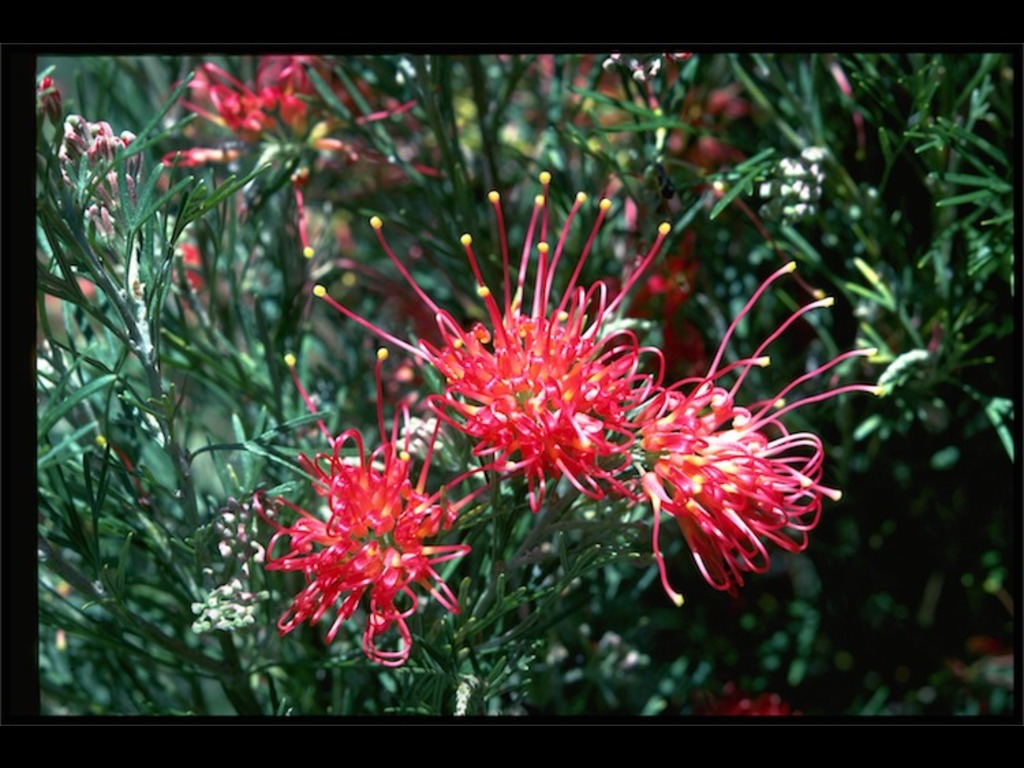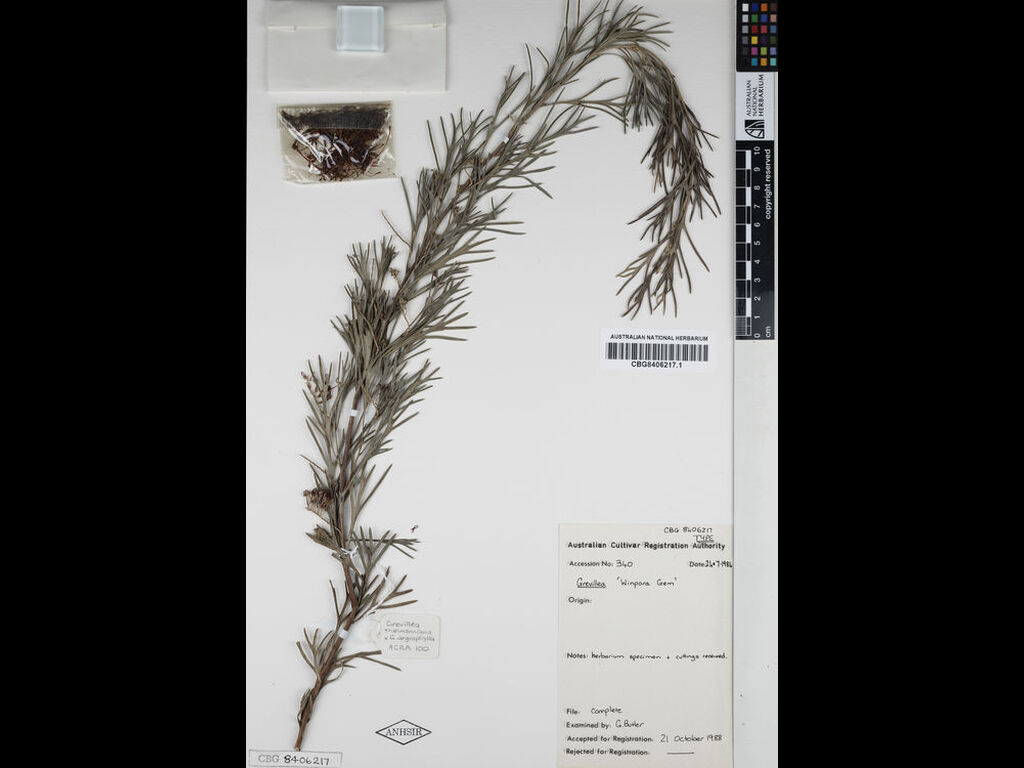Grevillea 'Winpara Gem'
- File Number
- 340
- ACRA Field Book Number
- 100
- Registration Date
- 20/10/1988
- Application Received
- 01/07/1984
- Family
- Proteaceae
- Cultivar Name
- Grevillea 'Winpara Gem'
- Origin
- Grevillea 'Winpara Gem' arose as a seedling on a property called "Winpara" at Jervois, South Australia in 1981. It is purported to be a hybrid between G. thelemanniana and G. olivacea. The cultivar was first received by the Authority in July 1984. Registration applied for by Mrs K Bartlett of "Winpara", Jervois, South Australia.
- Characteristics
- This cultivar is a dense shrub to 2m tall by up to 3m wide. The leaves are grey green and deeply divided (almost to the midrib) and are up to 6cm long. The leaf edges are rolled under. The venation under the leaf is particularly prominent. Each leaf lobe has a short but pungent tip. The upper surface of the leaf has scattered silky hairs while the lower surface other than the veins is closely covered with a dense mat of closely appressed silky hairs. The branchlets are also covered by fine hairs that diminish as the wood matures. The flowers are in racemes ca. 25mm long produced terminally on short lateral branchlets arising from the older wood. This sometimes leads to the flowers being partially obscured by younger growth. Individual flowers are densely packed on each raceme. The perianth is dark in colour, but appears lighter due to the dense covering of fine white hairs. The perianth is 7-8mm long and splits into four segments. The reddish style is hooked when it first emerges but soon straightens, measuring ca. 14mm long. Flowers are produced from April to mid October. Diagnosis: G. olivacea: 5m tall and spreading. Leaves up to 70mm long x 20mm wide; oblanceolate with an emarginate apex; short, very scattered silky hairs on the upper surface but appearing glabrous; densely silky hairy on the upper surface. Flowers in small compact racemes on older wood; racemes short and rounded; perianth pale on the outside due to the dense coating of silky hairs; inside perianth glabrous; style glabrous and red; flowers winter/spring. Grevillea 'Winpara Gem': 2m tall by up to 3m wide. Leaves up to 60mm long x 35mm wide at the widest point; regularly pinnatisect; lobes linear; lobes 1-2mm broad; scattered fine silky hairs above; moderately dense silky hairs below. flowers in 25mm long racemes terminally on short branchlets arising from older wood; racemes straight; perianth appears pale on outer surface due to dense silky hairs; inside of perianth glabrous; style glabrous and red; flowers April to mid October. G. thelemanniana: can vary in height but usually .3-1.2m tall by 2-3m wide. Leaves from 15-50mm long by ca. 20mm wide; from 3 lobed to pinnatisect; lobes linear; lobes 1-5mm broad; covered in fine silky hairs. Flowers in 50mm long racemes terminally on newer wood; racemes reflexed; perianth glabrous on the outer surface; inside of perianth densely hairy; style glabrous and scarlet; flowers May to September. The leaves more closely resemble G. thelemanniana but are not as much divided. Racemes are also similar but shorter in Grevillea 'Winpara Gem'.
- Cultivation
- Grevillea 'Winpara Gem' has proved to be more vigorous than G. thelemanniana. It is drought tolerant and relatively frost hardy. It grows vigorously in sandy or clay soils and as both parents grow in alkaline soils the cultivar will probably do well in such situations. An open sunny position is appreciated. The cultivar must be propagated by vegetative means to preserve the cultivar form. Five cents from the sale of each plant is to be used to assist in the preservation of rainforest in Queensland.
- Publication
- "Australian Horticulture" July 1987 page 49.
- Colour Coding
- RHS Colour Chart 1966 Flowers: perianth: orange red group 35C style: red group 53C
- Propagation
- Cuttings from semi-firm new growth
- Applicant Name
- Mrs K Bartlett
- Uses
- As part of a mass planting or mixed in a shrubbery, or as a spectacular feature plant. Attracts nectar feeding birds.
- Availability
- Windyridge Nursery
- ANBG Accession Numbers
- ACC340; ACRA100; CBG8406217.
- NSL ID
- -

